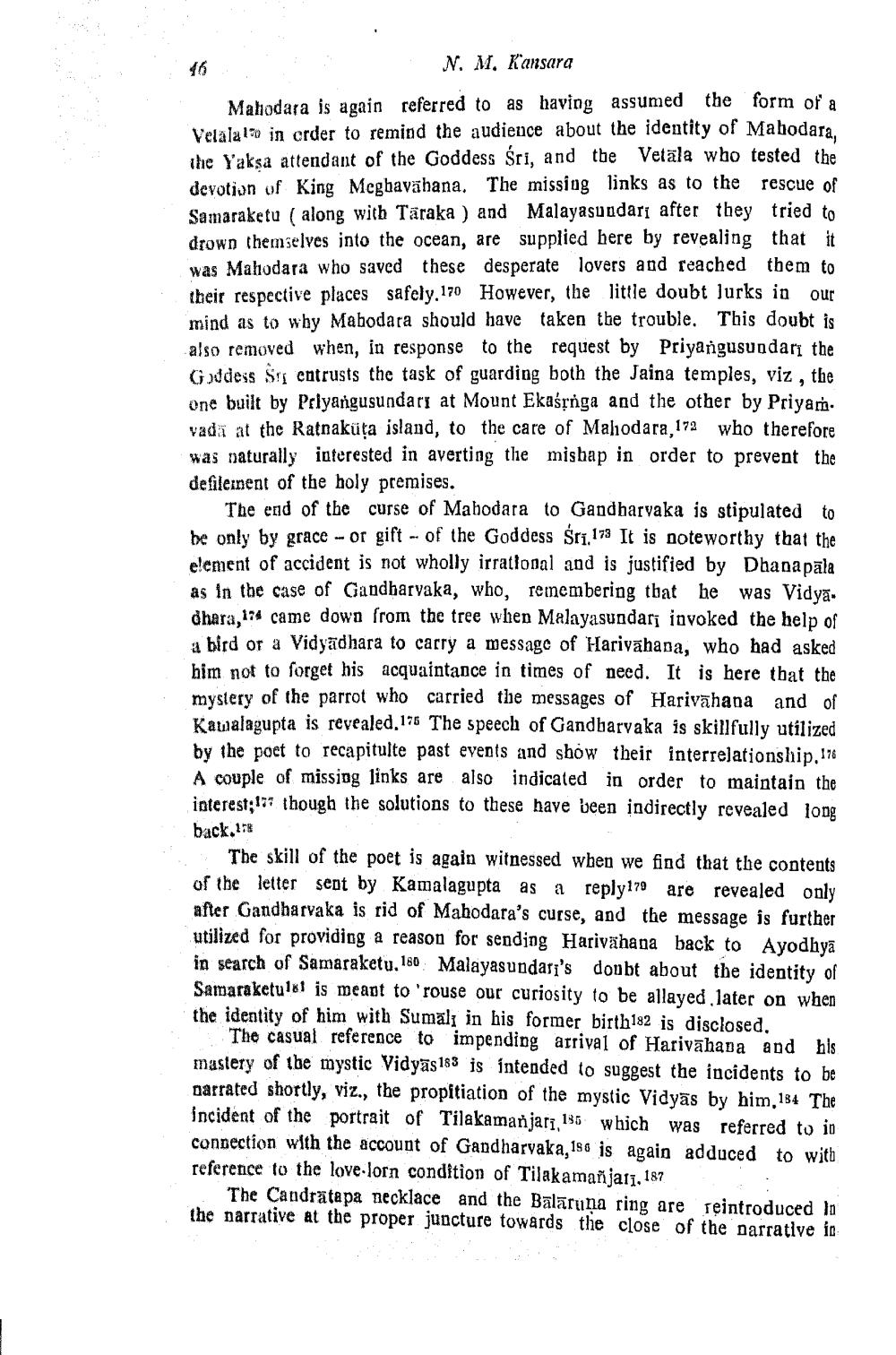________________
N. M. Kansara
Mahodara is again referred to as having assumed the form of a Velala 10 in order to remind the audience about the identity of Mahodara. the Yaksa attendant of the Goddess Sri, and the Vetāla who tested the devotion of King Meghavahana. The missing links as to the rescue of Samaraketu ( along with Taraka ) and Malayasundari after they tried to drown themselves into the ocean, are supplied here by revealing that it was Mahodara who saved these desperate lovers and reached them to their respective places safely. 170 However, the little doubt lurks in our mind as to why Mahodara should have taken the trouble. This doubt is also removed when, in response to the request by Priyangusundari the Guddess Su entrusts the task of guarding both the Jaina temples, viz , the one built by Priyangusundari at Mount Ekaśțnga and the other by Priyam. vada at the Ratnakuta island, to the care of Maliodara,172 who therefore was naturally interested in averting the mishap in order to prevent the defilernent of the holy premises.
The end of the curse of Mahodara to Gandharvaka is stipulated to be only by grace - or gift - of the Goddess Śrī,173 It is noteworthy that the element of accident is not wholly irrational and is justified by Dhana pāla as in the case of Gandharvaka, who, remembering that he was Vidyadhara 174 came down from the tree when Malayasundari invoked the help of a bird or a Vidyadhara to carry a message of Harivahana, who had asked him not to forget his acquaintance in times of need. It is here that the mystery of the parrot who carried the messages of Harivāhana and of Kawalagupta is revealed, 176 The speech of Gandharvaka is skillfully utilized by the poet to recapitulte past events and show their interrelationship. 176 A couple of missing links are also indicated in order to maintain the interest: 177 though the solutions to these have been indirectly revealed long back.178
The skill of the poet is again witnessed when we find that the contents of the letter sent by Kamalagupta as a reply 179 are revealed only after Gandharvaka is rid of Mahodara's curse, and the message is further utilized for providing a reason for sending Harivähana back to Ayodhyā in search of Samaraketu. 180 Malayasundari's doubt about the identity of Samaraketulet is meant to 'rouse our curiosity to be allayed later on when the identity of him with Sumali in his former birth 182 is disclosed.
The casual reference to impending arrival of Harivāhapa and his mastery of the mystic Vidyās 183 is intended to suggest the incidents to be Darrated shortly, viz., the propitiation of the mystic Vidyās by him, 154 The incident of the portrait of Tilakamanjarī, 135 which was referred to in connection with the account of Gandharvaka, 1s6 is again adduced to with reference to the love lorn condition of Tilakamañjalī, 187 ,
The Candratapa necklace and the Balaruna ring are reintroduced in the narrative at the proper juncture towards the close of the narrative in




